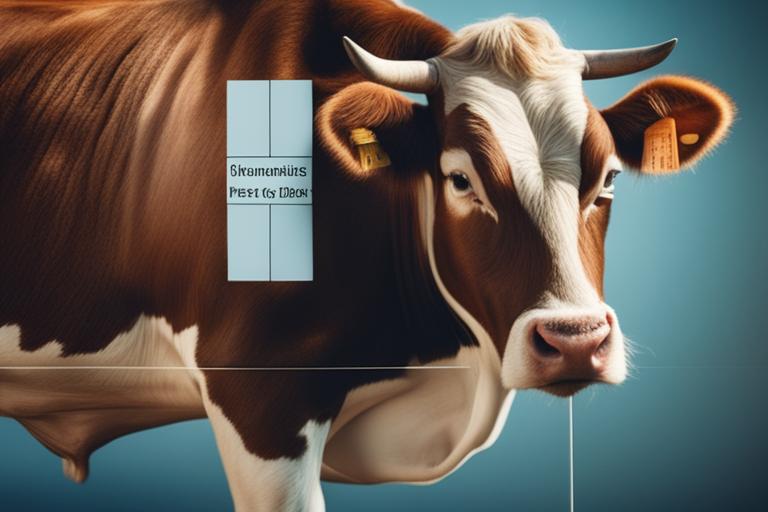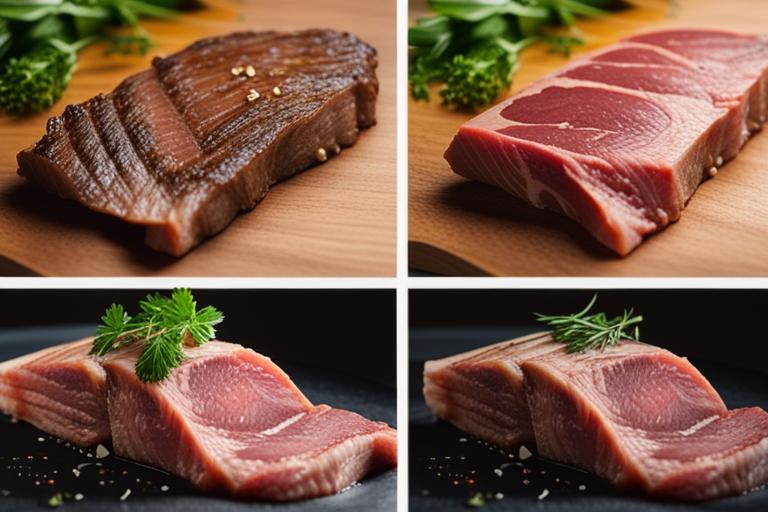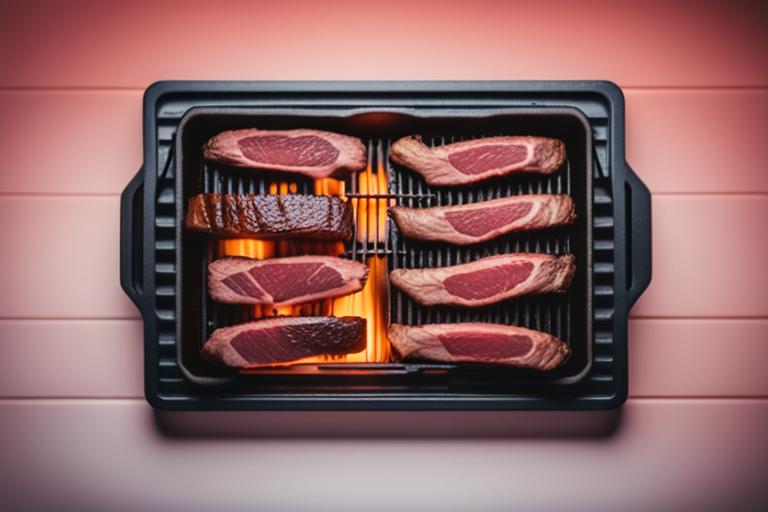Choosing the right cut of beef is crucial to achieving the desired flavor and texture in your dishes. Two cuts that are often compared are skirt steak and flank steak. While they may seem similar, there are important differences between the two that can affect the outcome of your recipe. In this article, we’ll compare skirt steak vs flank steak and explore their similarities, differences, and the best ways to use them in your cooking.
Skirt Steak vs Flank Steak: What are the Differences?
By reading this article, readers will learn:
– The physical differences, flavors, and textures of skirt steak and flank steak, and how they affect the cooking process.
– The cost, nutritional value, and cooking methods of each cut.
– The best recipes and dishes for each cut, and how to substitute one cut for the other in recipes.
When it comes to cooking beef, choosing the right cut can make all the difference. Skirt steak and flank steak are two popular cuts that are often used interchangeably in recipes. However, they have distinct differences that can affect the final result. Skirt steak is thin and long, while flank steak is thicker and wider. Both cuts are known for their beefy flavor and chewy texture, but they have different levels of tenderness and fat content.
Understanding the differences between skirt steak and flank steak is essential to choosing the right cut for your recipe. In this article, we’ll dive into the details of each cut, including their location on the cow, physical characteristics, flavor and texture differences, cost comparison, cooking methods, nutritional value, and the best recipes and dishes for each.

Skirt Steak and Flank Steak Defined
Skirt steak and flank steak are both cuts of beef that come from the abdominal area of the cow. Skirt steak is located near the diaphragm, while flank steak is closer to the hindquarters. Skirt steak is thin and long, with a pronounced grain that runs the length of the meat. Flank steak is thicker and wider, with a more uniform texture.
Historically, skirt steak was a popular cut in Mexican and Tex-Mex cuisine, where it’s used in dishes like fajitas and carne asada. Flank steak is commonly used in European cuisine, where it’s used in dishes like London broil and beef stroganoff.

Flavor and Texture Differences
Skirt steak and flank steak have distinct differences in flavor and texture. Skirt steak is known for its intense beefy flavor and chewy texture. It has a loose grain that makes it ideal for marinating and grilling. Flank steak also has a beefy flavor, but it’s not as intense as skirt steak. It’s also slightly more tender than skirt steak, with a firmer texture.
The texture and flavor of each cut can affect the cooking process. Skirt steak is best when marinated for several hours to tenderize the meat and enhance its flavor. It’s also ideal for high-heat cooking methods like grilling and broiling. Flank steak is more versatile and can be cooked in a variety of ways, including grilling, broiling, and pan-searing. It’s also great for slow cooking methods like braising and stewing.
When it comes to seasoning and marinating, both cuts can benefit from a good marinade or dry rub. Skirt steak can handle bold flavors like garlic, cilantro, and lime, while flank steak pairs well with milder flavors like rosemary, thyme, and red wine.
Cost Comparison
Cost is an important factor to consider when choosing between skirt steak and flank steak. Skirt steak is generally less expensive than flank steak due to its high-fat content and tough texture. However, the cost can vary depending on the grade and location of the cut. Grass-fed, organic, and premium cuts of both skirt steak and flank steak can be more expensive.
When deciding between the two cuts, it’s important to consider your budget and the recipe you’re making. Skirt steak is a good choice for budget-friendly meals, while flank steak is a better option for special occasions and more upscale dishes.

Cooking Methods
The cooking methods for skirt steak and flank steak differ due to their different textures and thicknesses. Skirt steak is best cooked quickly over high heat, while flank steak can be cooked using a variety of methods.
Grilling is one of the best ways to cook skirt steak, as it sears the meat and locks in the juices. Skirt steak can also be broiled or pan-seared. Flank steak is ideal for grilling, but it can also be broiled, pan-seared, braised, or stewed. Slow-cooking methods like braising and stewing can help tenderize the meat and bring out its flavor.
When cooking skirt steak and flank steak, it’s important to consider the cooking time, temperature, and technique. Skirt steak cooks quickly, so it’s important to keep an eye on it to prevent overcooking. Flank steak is thicker and can take longer to cook, so it’s important to use a meat thermometer to ensure it’s cooked to the desired temperature.
Nutritional Value
Skirt steak and flank steak have similar nutritional profiles, with high levels of protein, iron, and other essential nutrients. However, skirt steak has a higher fat content than flank steak, which can affect the overall nutritional value.
When choosing between the two cuts, it’s important to consider the nutritional value and how it affects your recipe. Skirt steak can be a good choice for high-protein meals, while flank steak is better for those looking for a leaner cut of beef.
Personal Experience: My Favorite Flank Steak Recipe
When it comes to cooking flank steak, I have a favorite recipe that never fails to impress my guests. It’s a simple recipe with a few ingredients, but the end result is a flavorful and juicy steak that everyone loves.
Ingredients:
– 1 1/2 pounds of flank steak
– 2 cloves of garlic, minced
– 1/4 cup of soy sauce
– 2 tablespoons of brown sugar
– 2 tablespoons of olive oil
– 1/2 teaspoon of black pepper
Instructions:
1. In a small bowl, mix together the garlic, soy sauce, brown sugar, olive oil, and black pepper.
2. Place the flank steak in a large resealable plastic bag and pour the marinade over it.
3. Seal the bag and marinate in the refrigerator for at least 2 hours, or overnight if possible.
4. Preheat your grill or broiler to high heat.
5. Remove the steak from the marinade and discard the excess marinade.
6. Grill or broil the steak for 6-8 minutes per side, or until it reaches your desired level of doneness.
7. Let the steak rest for 5-10 minutes before slicing it thinly against the grain.
This recipe always results in a tender and flavorful flank steak that pairs well with a variety of sides, from roasted vegetables to rice pilaf. The soy sauce and brown sugar in the marinade give the steak a slightly sweet and savory flavor that is irresistible. Give it a try and see for yourself!

Recipes and Dishes
Skirt steak and flank steak are versatile cuts that can be used in a variety of recipes and dishes. Skirt steak is ideal for Mexican and Tex-Mex dishes like fajitas, tacos, and carne asada. It’s also great in Asian-inspired dishes like stir-fry and noodle bowls. Flank steak is a popular cut for European dishes like London broil, beef stroganoff, and steak au poivre. It’s also great in salads, sandwiches, and tacos.
When substituting one cut for the other in a recipe, it’s important to consider the differences in texture and flavor. Skirt steak is best in dishes that require a chewy texture and bold flavors, while flank steak is better in dishes that require a firmer texture and milder flavors.
| Skirt Steak | Flank Steak |
|---|---|
| Thin and long | Thicker and wider |
| Located near the diaphragm | Located closer to the hindquarters |
| Intense beefy flavor and chewy texture | Beefy flavor with a firmer texture |
| Best for marinating and grilling | Versatile; can be cooked in a variety of ways |
| Benefits from bold flavors like garlic, cilantro, and lime | Pairs well with milder flavors like rosemary, thyme, and red wine |
| Generally less expensive due to high-fat content and tough texture | Generally more expensive, but can vary depending on grade and location of cut |
| Ideal for Mexican and Tex-Mex dishes like fajitas, tacos, and carne asada | Ideal for European dishes like London broil, beef stroganoff, and steak au poivre |
| Good choice for budget-friendly meals | Better option for special occasions and more upscale dishes |
| High in protein, iron, and other essential nutrients, but with higher fat content | High in protein, iron, and other essential nutrients, with leaner meat |
Conclusion
In conclusion, choosing between skirt steak and flank steak depends on several factors, including flavor, texture, cost, cooking methods, nutritional value, and the recipe you’re making. Skirt steak is a great choice for budget-friendly meals and bold-flavored dishes, while flank steak is better for special occasions and more upscale recipes. Understanding the differences between these two cuts can help you choose the right one for your next meal.
Frequently Asked Questions
Q. What is the difference between skirt and flank steak?
A. Skirt steak is thinner and more flavorful, while flank steak is leaner and chewier.
Q. Who should choose skirt steak over flank steak?
A. Those who prefer a more tender and flavorful cut of meat should choose skirt steak.
Q. How should I prepare skirt steak versus flank steak?
A. Skirt steak is best grilled or seared, while flank steak is best marinated and grilled or broiled.
Q. What if I prefer leaner meat, should I still choose skirt steak?
A. No, if you prefer leaner meat, choose flank steak instead of skirt steak.
Q. How do I know which steak to choose for my recipe?
A. Consider the texture and flavor you want in your dish, and choose either skirt or flank steak accordingly.
Q. What if I can’t find either skirt or flank steak at my local grocery store?
A. Ask your butcher for recommendations on similar cuts of meat, such as hanger or flat iron steak.
Follow us!!